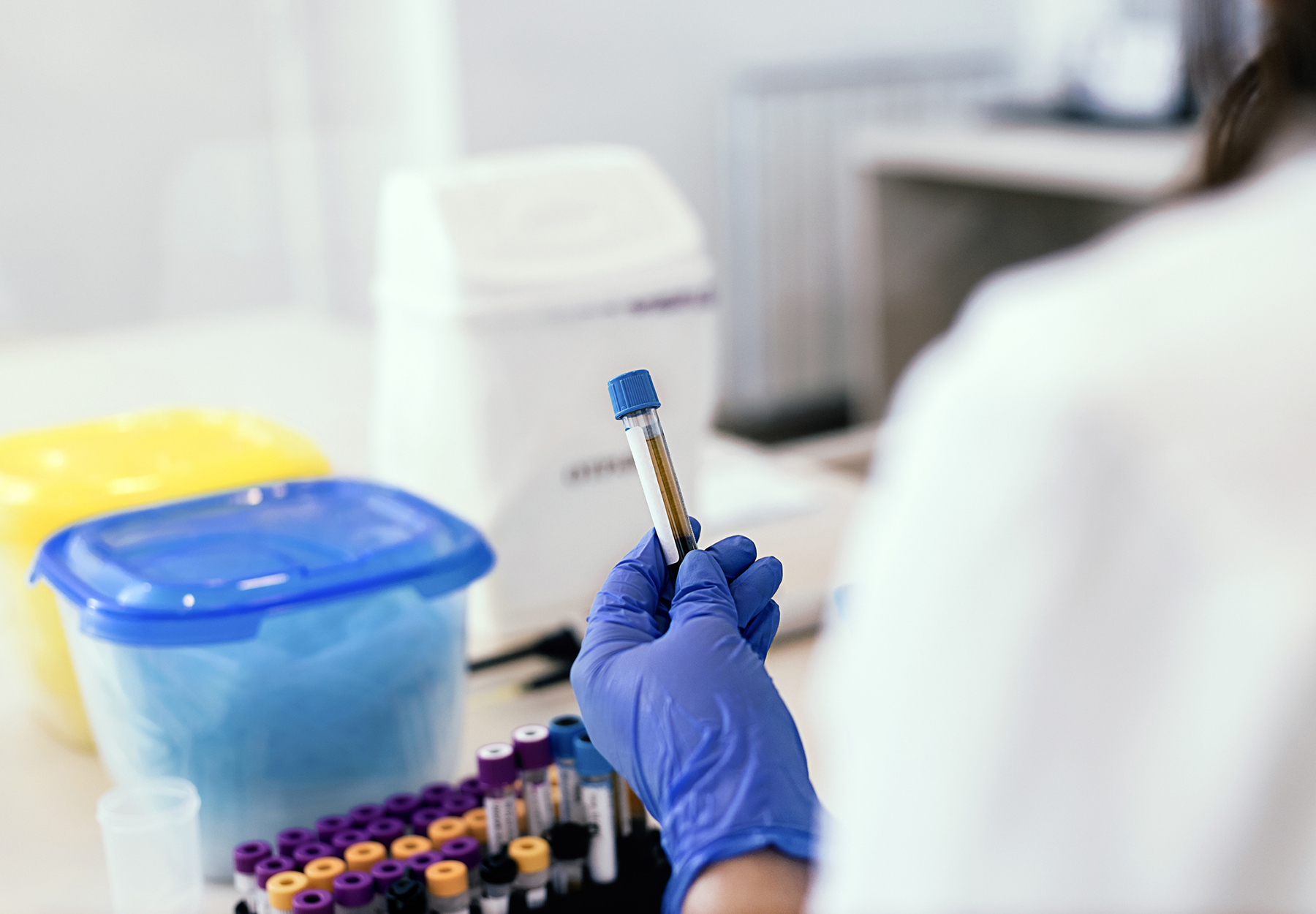Six Steps for a Bloodborne Pathogens Exposure Determination
The first phase in protecting your staff is to carry out an exposure determination to figure out which of your workers are at risk.

The OSHA Bloodborne Pathogens (BBP) Standard requires you to protect the workers in your lab who handle or are otherwise exposed to contaminated blood and other biologically infectious materials.1 The first phase in the process is to carry out an exposure determination to figure out which of your workers are at risk of infection from such materials. Carrying out a BBP exposure determination is a six-step process.
Step 1: Make Sure You Know the Exposures You’re Assessing
The BBP Standard applies to workers who have what OSHA calls “occupational exposure” to blood and biohazardous materials. To carry out the right kind of exposure determination, you must first understand what occupational exposure actually means.
Compliance Strategy: Be aware that the BBP Standard defines occupational exposure as reasonably anticipated skin, eye, mucous membrane, or parenteral contact with blood or other potentially infectious materials that may result from the performance of an employee’s duties. “Blood” means human blood, human blood components, and products made from human blood. “Other potentially infectious materials” (OPIM) is a broad term that includes:
- Human body fluids, including semen, vaginal secretions, cerebrospinal fluid, synovial fluid, pleural fluid, pericardial fluid, peritoneal fluid, amniotic fluid, and saliva in dental procedures
- Any body fluid that is visibly contaminated with blood
- All body fluids in situations where it is difficult or impossible to differentiate between or among body fluids
- Any unfixed tissue or organ (other than intact skin) from a living or dead human;
- HIV-containing cell or tissue cultures, organ cultures
- HIV- or HBV-containing culture medium or other solutions
- Blood, organs, or other tissues from experimental animals infected with HIV or HBV
“Parenteral contact” includes the piercing of mucous membranes or the skin barrier through needlesticks, human bites, cuts, abrasions, and other agents, incidents, or events.
Step 2: List Job Classifications in which ALL Employees Have Exposure
The next step in the exposure determination process is to identify which of the workers in your lab have occupational exposure. Compliance Strategy: Look at your lab’s job classifications and determine which of them involve exposure to blood or OPIM. Treat all employees covered by those job classifications as having occupational exposure. Examples:
- Physicians
- Phlebotomists
- Registered nurses
- Nurse assistants
- EMT personnel
- Pathologists
- Pathology assistants
- Anesthesiologists
- Anesthesia technologists
- Dentists
- Dental assistants and hygienists
- Surgeons
- Surgical technicians and assistants
Step 3: List Job Classifications in which SOME Employees Have Exposure
Your exposure determination must also account for job classifications for which only some workers have occupational exposure, such as those responsible for cleaning contaminated lab equipment. Compliance Strategy: Make a list of all those classifications. Examples:
- Custodial, maintenance, and cleaning personnel
- Housekeepers
- Couriers
- Drivers
- Lab technicians
- Field service technicians
Step 4: List Job Tasks that Have Exposure
There’s one more list you need to carry out a BBP exposure determination. Compliance Strategy: Make a list of all tasks and procedures (or groups of closely related tasks and procedures) in which occupational exposure occurs and that are performed by employees listed in the second list, i.e., job classifications in which only some employees covered by the classification have occupational exposure. Examples:
- Providing nonprimary first aid
- Washing contaminated laundry
- Venipuncture and sample collection
- Transporting test samples
- Cleaning, servicing, repairing, or inspecting lab equipment
- Disposing of contaminated waste
- Cleaning spills
- Responding to lab emergencies
- General housekeeping
- Entering areas where blood or OPIM is stored or handled
Step 5: Don’t Consider PPE
Be aware that you’re not allowed to factor gloves, eye protection, and other forms of personal protective equipment (PPE) into your determination of whether a worker has occupational exposure. Compliance Strategy: When putting together each list, assume that the job classification and/or task does involve exposure even if the worker uses PPE while performing it.
Step 6: Select Appropriate Controls
Once you complete your lists of exposed job classifications and tasks, you must select measures to protect employees who have occupational exposure. Compliance Strategy: Although OSHA doesn’t tell you precisely what methods to use, it does require you to consider the following types of controls:
- The first choice is to use reasonably practicable engineering controls to eliminate the exposure risk altogether, such as robotic systems for handling blood and OPIM without the need of human contact;
- Use of PPE and safety equipment such as needle disposal devices to minimize the risk; and/or
- Use of administrative or work controls affecting how hazardous tasks are carried out, including developing, implementing, and training workers how to carry out safe work practices for handling and disposing contaminated sharps or laundry.
Takeaway
There are two other things to keep in mind about carrying out a BBP exposure determination. First, it’s just stage one of the larger process of protecting workers from risk of infection. Based on the findings of your determination, you may also have to implement a complete BBP Exposure Control Plan to meet the OSHA Standard. In addition, the exposure determination represents a snapshot of one moment in time and must be reviewed on a regular basis and in response to BBP incidents at your facility. You must also revise and update your exposure determination to keep up with significant changes to job classifications, job tasks, and/or lab operations that may render the information contained in your previous determination obsolete.
References:
Subscribe to view Essential
Start a Free Trial for immediate access to this article